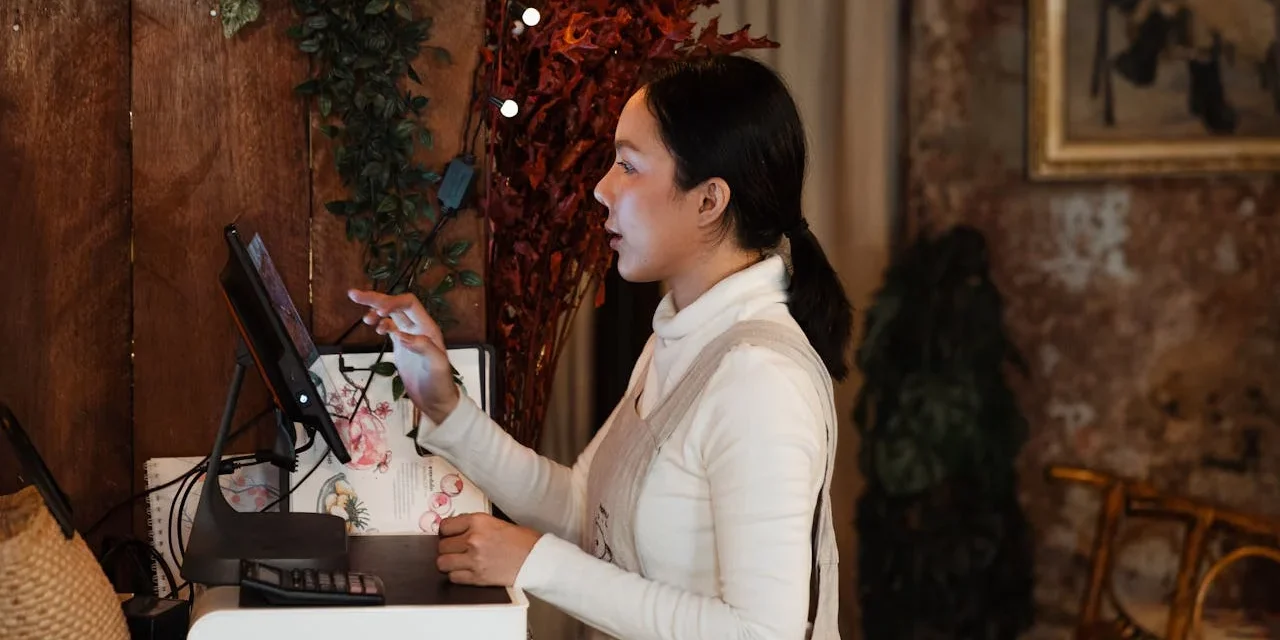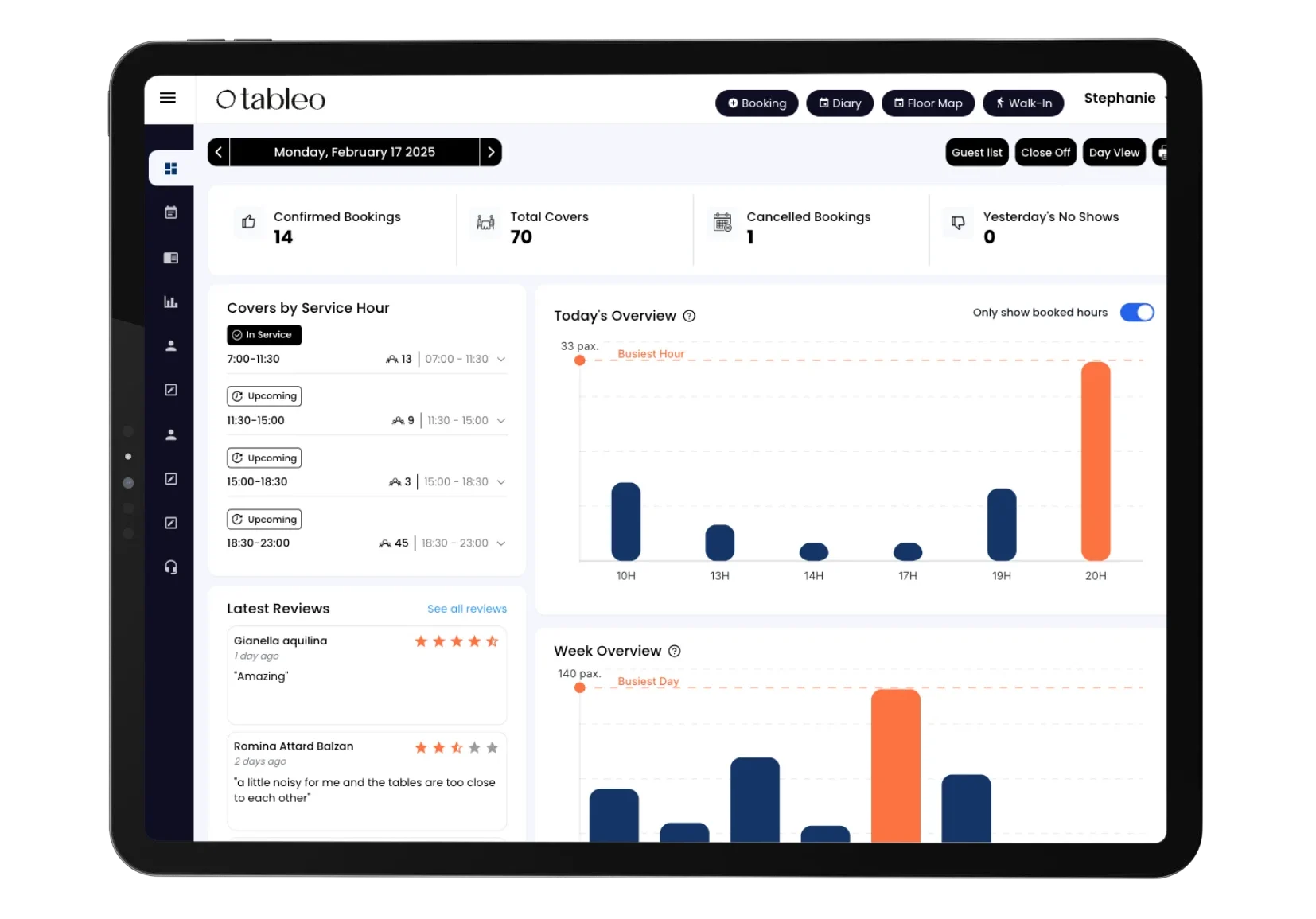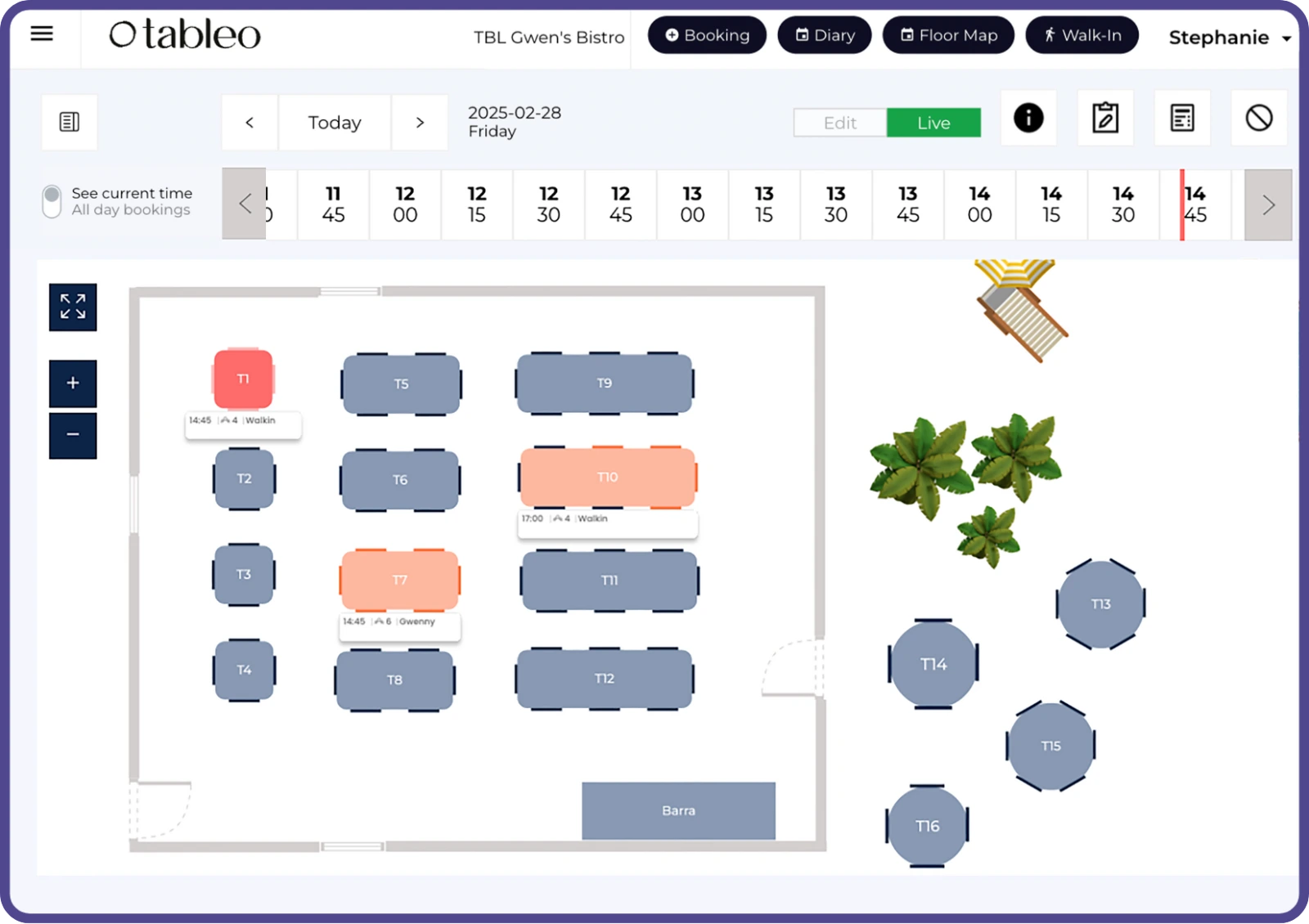Table of Contents
- What is restaurant reservation software?
- What are the two types of restaurant reservations?
- The power of online reservations: Google, TripAdvisor & more
- AI and automation: The next generation of booking tools
- What is an affordable restaurant reservation system?
- Choosing what’s best for your restaurant
- Evaluating ROI — Is it worth it?
- Final thoughts

If you’re running a restaurant, you already know there’s a lot more to it than just great food and friendly service. Managing bookings, minimizing no-shows and making sure your tables are full (but not overbooked) – it’s a juggling act. That’s where the best restaurant booking software can be a total game-changer.
But with so many options out there, how do you know which one is right for you?
Don’t worry, we’ve got you. Let’s break it down and talk about how to choose the best restaurant booking system for your business, how online platforms like Google and TripAdvisor play a role, what tools are available, and what makes solutions like Tableo, OpenTable and Resy worth considering.
First off, what is restaurant reservation software?

At its core, a restaurant reservation platformhelps you manage bookings, whether they come in online, over the phone or in person. But the best ones do so much more than that. Think of a management system with automated confirmations, booking reminders and table management. Add to that integrations with platforms like Google and TripAdvisor, and even AI assistantsthat help manage your bookings in real-time, around the clock.
Some systems are bare-bones, others come packed with features. The key is figuring out what you need. Are you a cozy bistro with 10 tables? Or a busy city hospitality hotspot that’s packed every weekend? Your needs will differ and your reservation software should match them.
What are the two types of restaurant reservations?
Let’s keep it simple:
1. Manual reservations– These are the old-school kind. Diners call you up or walk in and you jot down their name in a reservation book (or maybe a spreadsheet). It works, but it’s prone to errors and hard to scale.
2. Online Reservations – This is where modern software shines. Guests can book a table via a booking widget on your website, social media, Reserve with Googleor TripAdvisor, at any time, from anywhere. It’s fast, convenient and puts the power in the customer’s hands.
The power of online reservations: Google, TripAdvisor & more
Online reservations aren’t just a convenience; they’re a major competitive advantage and improve the customer experience from the get-go.
The most effective systems consolidate all your bookings, whether they come from your restaurant website, Reserve with Google, TripAdvisor or social media — into one central dashboard. This saves you from the nightmare of checking multiple platforms, reduces human error and keeps your front-of-house operations smooth and streamlined.
Reserve with Google
Allows users to book a table directly from Google Search or Maps. Imagine a hungry couple searching for “Italian restaurant near me” — your restaurant pops up with a prominent “Reserve” button. That’s instant visibility and seamless conversion.
TripAdvisor
TripAdvisor also offers table booking capabilities through integration partners. Many reservation systems let you plug into TripAdvisor so that users browsing for the best-rated spot can also book a table right then and there.
Some systems also include online waitlists, which allows guests to join a virtual queue if your restaurant is fully booked. This is a fantastic way to manage walk-in traffic more effectively, reduce crowding at the door and keep guests engaged even during peak periods.
Many top systems like OpenTable, Resdiary, and Tableo offer these reservation management features and integrations. The goal is to reduce friction for the customer, keep bookings centralized, and capture more reservations directly from where decisions are being made.
AI and automation: The next generation of booking tools
AI is making its way into restaurant tech in a big way. Some platforms, including Tableo, have begun to introduce AI-powered assistants that can handle customer interactions, answer availability queries and collect table reservations, all without any manual input from staff.
These smart assistants can function across web chat, social media or messaging apps, providing around-the-clock service even when your team is busy or the restaurant is closed.
It’s a fantastic way to:
Reduce missed bookings
Free up staff time
Provide consistent, friendly service in multiple languages
As this tech becomes more common, expect more providers in the restaurant industry to roll out similar tools.
What is an affordable restaurant reservation system?

Some platforms, like OpenTable and SevenRooms, are geared toward higher-end venues and come with premium pricing. While powerful, they may not be accessible for smaller businesses.
Tableo, on the other hand, offers a completely
free planthat’s ideal for small restaurants or those testing out online reservations for the first time. You get access to a cloud-based software solution available on laptop, tablet or mobile with multiple features including:Online reservation management, including Google integration
Table management on a floor plan or diary
Customised online booking widget
Customer database, reports and insights
Free plan includes up to 100 covers monthly without extra upfront costs or per cover fees.
Other affordable options include Resy, which offers scalable plans depending on your size and needs and Yelp Guest Manager, which integrates nicely with Yelp’s review ecosystem.
The bottom line? The best restaurant reservation software balances functionality with affordability. Look for something that fits your budget and grows with you.
Choosing what’s best for your restaurant

Here’s the thing: there’s no one-size-fits-all. The best software is the one that solves your problems.
Ask yourself:
Do I want to reduce phone calls and walk-ins?
Do I want to accept bookings 24/7?
Do I need to reduce no-shows?
Do I want to manage tables and shifts more efficiently?
Do I want to take online payments for bookings?
Do I want to be visible on Google and TripAdvisor?
Do I need a system to integrate with my POS?
Will an AI assistant help my team handle more bookings with less stress?
If you answered yes to most of these, you’re ready for a modern reservation system to streamline operations. Whether you choose Tableo, OpenTable, Resy, or another provider for your restaurant or bar, make sure it aligns with your restaurant’s workflow and customer habits.
Evaluation checklist: What to look for
Before making a decision, use this checklist to evaluate your options and help you choose the right system:
Ease of Use– Is the interface intuitive and user-friendly for both staff and customers?
Scalability– Will it grow with your business as you add more tables or locations?
Feature development– Does the platform innovate regularly with useful updates?
Customer support– Are support channels responsive and helpful?
Reporting and analytics– Can you easily view data like booking trends, no-show rates and customer preferences?
Pricing– Does it offer a fair plan with no hidden fees based on your current needs?
Busy period management– Can it handle peak times smoothly without overbooking?
Customer insights– Does it collect useful info about diners to help with personalized service?
Customised widgets– Can you brand the booking experience to match your website?
Marketing tools– Does it integrate with email software or SMS to send customer communications?
Use these criteria to compare platforms side by side. A feature-rich system only works if it actually simplifies your operations and supports growth.
Evaluating ROI — Is it worth it?
Spoiler alert: yes, especially when you can measure your return.
Tools like Tableo’s ROI calculator (check it out here) can help you understand the financial impact of online booking integrations. By estimating the number of Google-driven bookings and multiplying it by your average ticket size, you can see the potential revenue upside.
This kind of data makes it easier to justify the investment, whether you stick with a free plan or upgrade to something more advanced.
Final thoughts
Choosing the best restaurant reservation software isn’t about picking the flashiest or most expensive option. It’s about finding the best fit for your business, whether that’s the free solution by Tableo or a premium system like SevenRooms.
In 2025, online visibility, customer convenience and automation are must-haves, not luxuries. Equip your restaurant with the tools it needs to compete, thrive and grow.
Ready to streamline your reservations and boost bookings?
Explore your options, test out a few systems, and don’t be afraid to start with a free plan. Your future (fully booked) self will thank you.


Stephanie Bugeja
Tableo’s design-savvy Marketing Executive, Stephanie blends UX expertise with creative flair. Lover of clean layouts and cornetti in Rome.

Stephanie Bugeja
Tableo’s design-savvy Marketing Executive, Stephanie blends UX expertise with creative flair. Lover of clean layouts and cornetti in Rome.









